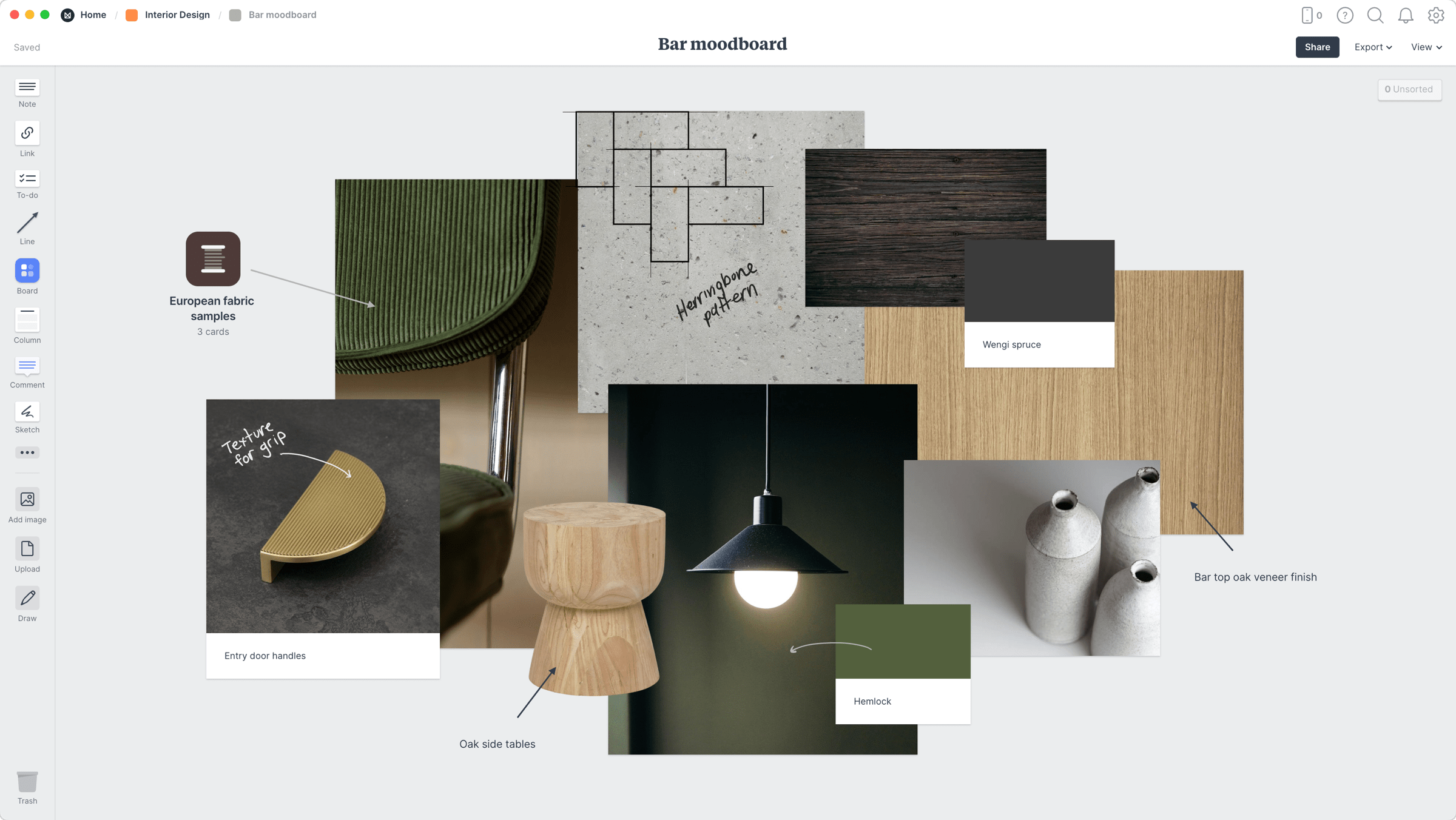Understanding Interior Design Sample Boards
Interior design sample boards, also known as mood boards or inspiration boards, are essential tools for designers and homeowners alike. They serve to visually communicate ideas, themes, and styles for a specific design project. Having worked in the interior design industry for years, I can attest to the power of a well-crafted sample board in easing the design process.
Why Use a Sample Board?
Creating a sample board can significantly streamline your design process. Here are some vital advantages:
- Visual Clarity: Sample boards help to convey the overall look and feel of your design, making it easier to see how different elements work together.
- Material Selection: They allow for the easy comparison of colors, fabrics, and textures.
- Client Communication: For designers, sample boards are an excellent way to communicate concepts to clients, ensuring everyone is on the same page.
- Inspiration: They can serve as a source of inspiration, helping to refine ideas and explore new directions in design.
Types of Sample Boards
There are several types of sample boards that you can create based on your project and preferences.
1. Physical Boards
Physical sample boards involve tangible elements—swatches of fabric, paint samples, and images pinned to a board. These boards allow for a tactile experience that can be very inspiring.
2. Digital Boards
Digital sample boards are created using design software or online platforms. They offer the flexibility to easily rearrange elements and share ideas quickly.
3. Concept Boards
These boards focus on a specific theme or concept, providing a clear direction for the design process. They can include style inspirations, color palettes, and furniture ideas.

4. Color Boards
Color boards highlight specific color palettes for the project, showcasing how various colors interact and complement each other.
Building Your Sample Board: Step-by-Step Guide
Creating a sample board is a straightforward process. Here’s a step-by-step guide based on my personal experience:

Step 1: Define Your Design Goals
Before you start, it’s essential to outline what you want to achieve with your design. Consider the room’s purpose and the desired ambiance.
Step 2: Gather Inspiration
Browse through magazines, Pinterest, or Instagram to collect images that resonate with your vision. Save colors, textures, and styles that appeal to you.

Step 3: Choose Your Format
Decide whether you want a physical board or a digital one. Both have unique benefits depending on your workflow.
Step 4: Assemble Your Elements
Begin arranging your images, fabric swatches, and other materials on your board. Play around with different layouts and color combinations until you find a harmonious balance.

Step 5: Refine and Finalize
Once you have a layout you love, take a step back and make sure all elements align with your original design goals. Adjust and finalize your board.
Interior Design Sample Board Examples
Here are some examples of well-crafted interior design sample boards that can inspire your creativity:

Example 1: Cozy Farmhouse Style
- Color Palette: Soft whites, muted greens, and natural wood tones.
- Materials: Linen, reclaimed wood, and metal accents.
- Textures: Soft textiles, rustic wood finishes, and plush rugs.
This board would evoke a warm and inviting atmosphere, perfect for a living room or kitchen.
Example 2: Modern Minimalist
- Color Palette: Monochromatic tones with pops of bold colors.
- Materials: Glass, metal, and polished concrete.
- Textures: Sleek finishes and clean lines.
Ideal for a contemporary office or an urban loft.

Example 3: Eclectic Bohemian
- Color Palette: Vibrant jewel tones mixed with earthy neutrals.
- Materials: Natural fibers, textured rugs, and artistic pieces.
- Textures: Layered textiles and various patterns.
This board can create a lively and creative atmosphere in any space.
Comparison Table: Physical vs. Digital Sample Boards
| Feature | Physical Sample Board | Digital Sample Board |
|---|---|---|
| t | Great for tactile experiences | Easy to share and edit |
| Cost | Can be expensive due to materials | Typically free or low-cost software |
| Creativity | Encourages hands-on creativity | Allows for limitless creativity with digital tools |
| Portability | Less portable | Easy to carry on devices |
Pros and Cons of Interior Design Sample Boards
Pros
- Visual representation of concepts, making it easier to pivot ideas
- Enhanced organization of design elements
- Facilitates better client communication and understanding
Cons
- Can become overwhelming if too many elements are included
- Time-consuming to create
- Physical boards can be costly if using high-end materials
Tips for Creating Effective Sample Boards
Here are some additional tips I’ve gathered throughout my experience:
- Stay Focused: Keep your design goals in mind to avoid clustering irrelevant items.
- Balance: Ensure there is a harmonious balance between colors, textures, and shapes.
- Limit Choices: It’s better to have a few strong elements than to overcrowd the board.
Frequently Asked Questions (FAQs)
What materials are commonly used for physical sample boards?
Common materials for physical sample boards include cardstock or foam boards, fabric swatches, paint chips, and printed images. Using a cork board or magnetic board is also a popular choice for easy rearrangement.
How do I choose colors for my sample board?
Start by selecting a base color that reflects your desired mood. From there, you can choose complementary and contrasting colors that enhance the overall theme. A color wheel can be an excellent resource for inspiration.
Can I use online tools to create digital sample boards?
Absolutely! There are numerous online tools available, such as Canva, Adobe Spark, and Moodboard, that allow you to create stunning digital sample boards with ease.
How can I effectively present a sample board to a client?
When presenting a sample board to a client, explain the reasoning behind your selections. Highlight how each element fits into the overall design concept and invite feedback to foster collaboration.